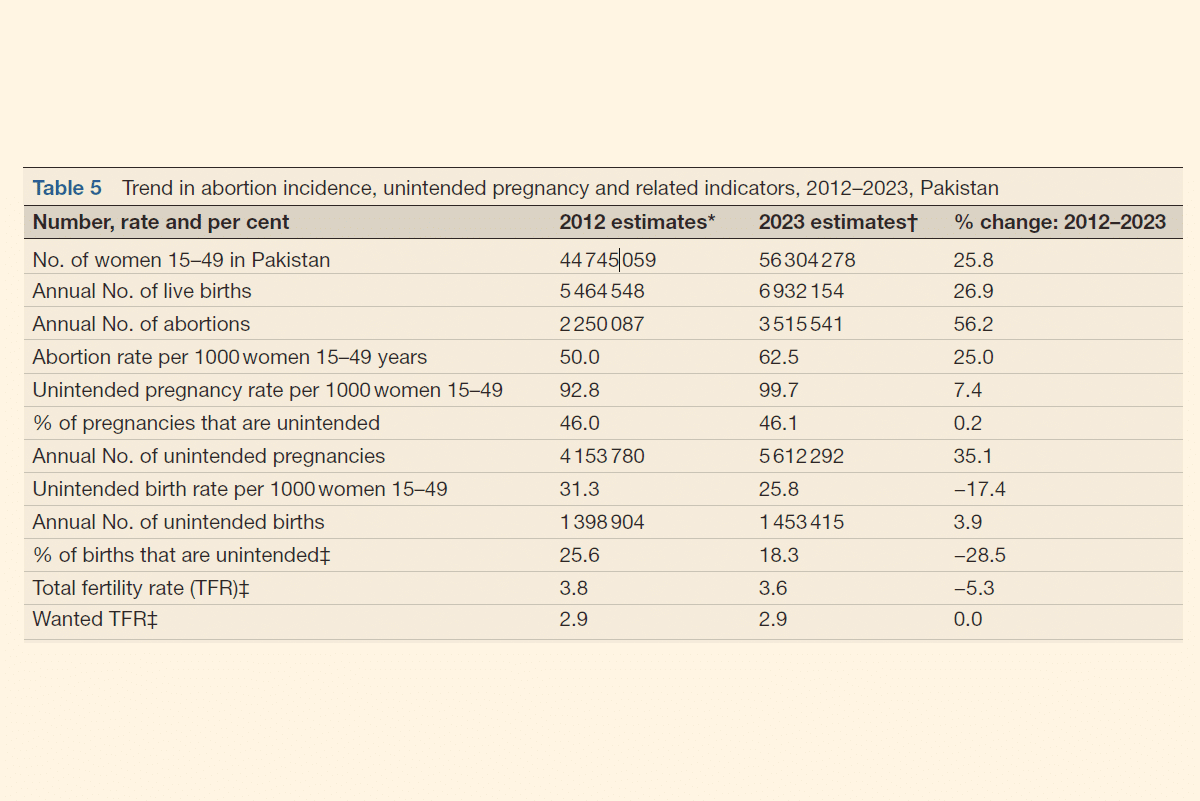
by Zeba Sathar, Susheela Singh, Iqbal H Shah, Muhammad Rehan Niazi, Tahira Parveen, Octavia Mulhern, Ali Mohammad Mir
BMJ Global Health, 2025;10:e017239. DOI: https://doi.org/10.1136/bmjgh-2024-017239
Abstract
Background: Despite induced abortion being highly legally restricted in Pakistan, studies in 2002 and 2012 showed that many women rely on abortion when faced with an unintended pregnancy. Following the 2012 study, concerted efforts were made to improve contraceptive services and to strengthen postabortion care. The availability and use of misoprostol also expanded in the past decade. Our primary objective was to provide new evidence on the rates of unintended pregnancy, induced abortion and postabortion care in 2023 and to assess trends in these outcomes since 2012.
Methods: This is a cross-sectional study based on a Health Professional Survey, and a nationally representative Health Facilities Survey, conducted in 2023. A widely applied methodology is used to estimate rates of abortion and unintended pregnancy. Data sources and methods are comparable across the 2012 and 2023 studies.
Results: In 2023, an estimated six million unintended pregnancies occurred and 64% of them or 3.8 (95% CI 2.2 to 6.4) million resulted in induced abortions. This corresponds to an annual unintended pregnancy rate of 100 and an induced abortion rate of 66 (95% CI 38 to 111) per 1000 women aged 15–49. There was no significant change in the unintended pregnancy rate, but the abortion rate increased by 25% between 2012 and 2023. In 2023, 697 913 women were treated for postabortion complications, corresponding to an annual rate of 12.1 (95% CI 6.4 to 16.5) per 1000 women ages 15–49. This treatment rate declined by 16% between 2012 and 2023.
Conclusions (from the main text): A key finding of the study is the sharp increase in abortion incidence in the past decade: The rate of abortion rose by 25% and the number of induced abortions in Pakistan grew from 2.2 million in 2012 to 3.5 million in 2023 (based on comparable geographical coverage in the two studies). While some of this upsurge is due to the increased number of women of reproductive age, the study found that women are increasingly resorting to abortion as a reproductive strategy across all regions of Pakistan. At the same time, there is evidence from the two most recent PDHS surveys in 2012–2013 and 2017–2018 that contraceptive use has not increased at all. Services in the private sector that provide information and access to induced abortions seem to have filled a gap in women’s reproductive choices and options to deal with unintended pregnancies. Furthermore, responses from expert interviews infer that younger and lower parity women are increasingly making use of abortion for fertility regulation, and this may be contributing to the rise in the incidence of abortion. It remains to be seen whether availability of contraception has also improved since the last PDHS in 2017–2018, because of the CCI recommendations issued in 2018 and whether this may be positively impacting contraceptive uptake and continuation of use and thereby potentially reducing unintended pregnancies and abortions, which would otherwise have seen even larger increases than documented in the present study. The evidence from this study, however, appears to point towards reproductive choices tilting towards rather than moving away from abortion as a fertility regulation strategy.



